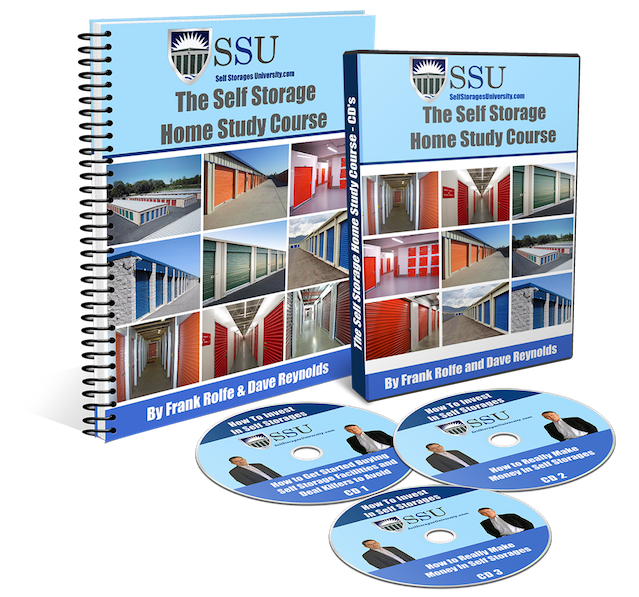On this month in 1890, Eddie Rickenbacker was born in Columbus, Ohio. He went on to become America’s greatest aviation ace, credited with 26 victories in various air battles, and being given the Medal of Honor. What most people don’t know about Rickenbacker was the amount of effort he put into his flying career. Starting at the age of 13, he began an in-depth study of machinery, which culminated in him taking correspondence courses on how engines work. He spent all of his time practicing and learning about how to put machinery together, so that he understood all of the limitations and opportunities of both planes and weapons. He also spent more time practicing flying than any other aviator of the period, learning how to do advanced flying maneuvers on his days off. When World War I ended, Rickenbacker had spent more time in the air than any other person – over 300 hours of combat missions alone. Effectively, he earned the title of America’s #1 Ace through hard work. The same is true of the best self-storage investors. They earn that right through intensive focus and time spent in studying the business model and making the most offers on new deals. Ben Franklin once said “diligence is the mother of good luck” and America has proven this axiom over and over: there is a correlation between effort and success.
Memo From Frank & Dave
Comparing Self-Storage To Other Real Estate Niches

There are many sectors of real estate investing – from multi-family to retail to industrial to lodging – and they all have their own benefits and disadvantages. So where does self-storage fit in to the investing market? Here are some high-level observations.
Rates of return
Cap rates on real estate properties in the U.S. tend to range from 4% to 12%, based on a variety of factors including type of asset, size, location, condition, occupancy, and other traits. On a macro level, self-storage cap rates tend to be on the higher side than most, mainly since storage is a newer asset class and has still not developed the prestige or following of office, apartment or other “blue chip” categories. But storage has continually gained stature and will someday be on par with all other niches. Until that time, storage buyers can get better returns than many other sectors. Figure on cap rates of 6% to 8%.
Structural risks to business model
The internet has been brutal to many real estate categories. It has destroyed retail, as a huge number of Americans now simply shop on-line. It has ravaged the lodging and office industries, as skype and gotomeeting webinars have replaced face-to-face interaction and allowed for working from home and avoiding many meetings. But there have been no technological challenges to the simple concept of storing goods (although the “cloud” has removed much demand for document storage providers). It is unlikely that there are really any risks to the storage business model.
Impact of recessions
One of the true tests of a real estate sector is its performance in both good times and bad. And self-storage has excelled in both. Prior to the 2007 Great Recession, storage had never really been tested and nobody knew what would happen. Instead of going into decline, the instability of economic collapse caused many Americans to store their possessions safely away while they changed housing and left to find work elsewhere.
Track record of performance
Self-storage is a young sector, beginning in only the 1970s and really growing significantly to scale in the 1980s. Yet it has had a good track record of performance, particularly in the all-important statistic of loan default rate. It typically comes in as first or second in the niche with the lowest percentage of loan defaults in the U.S. Part of this strength is found in consistent revenue, as most Americans find it too burdensome to cancel their storage unit and move their items out.
Conclusion
Self-storage has many strengths and ranks highly among all real estate sectors. It particularly shines in times of uncertainty and instability, and this makes it a good hedge at a time in which most economists predict a U.S. recession by 2021.
Self Storage Home Study Course
Our Home Study Course is not like anything you have ever listened to or read before. We do not fill it with a bunch of fluff on how your are going to make a million bucks with no money down. We tell you the whole story... the good, the bad, and the sometimes ugly.
Click Here for more information.
Using Self-Storage For Land Warehousing

Some self-storage investors are more interested in the future land value than the storage component. When you use storage to pay the bills while the land underneath grows in value, that is called “land warehousing”. So how does that work?
The business model
Land warehousing begins with a real estate sector that can create enough cash flow to cover the property tax and even the mortgage, while the land underneath becomes more valuable. These type of structures rely on uses that are relatively inexpensive to build and tear down, and metal buildings with roll-up doors fit this description.
The attributes of the right deal
A good land warehousing deal begins with a piece of land with tremendous future potential – typically a major corner tract at the intersection of two major roads. The bet is that this location will grow exponentially in value over the years. But it would be far too expensive to buy and hold it, with the continual holding cost and spiraling interest carry. The storage units on the top hold the solution, as these remove the financial pressure from the hold.
Structure re-purposing
Another benefit for storage as a way to inventory land is that the structure itself is adaptable to other uses if built appropriately. Those multi-story storage “shells” can be repurposed for office or retail usage, if that’s what the future holds – which explains why some storage developments don’t really look like storage at all.
Factors that can change and need to be mitigated
When you engage in land warehousing using storage, the key risk is that you will overpay for the development and the land won’t hold up its part of the bargain. As a result, it’s imperative that you do substantial diligence to make sure that the land has everything going for it and little future risk of the location declining in value. In addition, there is the risk that in the excitement of owning the land the storage concept is actually not strong enough to work in that location, due to overbuilding or lack of demand. You have to perform terrific due diligence all the way around on these type of deals, and acknowledge that not all of these opportunities will hold up to careful inspection.
Conclusion
Some storage investors are focused more on the land than the business model. There’s nothing wrong with land warehousing – all investors have a little of this concept in mind. But to do this correctly requires double the diligence to succeed.
If You’re Looking At Storage Deals Over $2 Million, Then Have A Professional Work With You To Obtain The Best Loan Possible
M.J. Vukovich is a capital consultant for self-storage loans. And he’s one of the best in the business. We’ve been using him for years and are firm believers that having a professional obtain and negotiate your loan is the best way to go in today’s lending environment. Here’s what a capital consultant can do for you:
- Create your loan package.
- Create the list of potential lenders based on current appetite for these type of loans.
- Meet with these lenders and obtain offers.
- Give you an array of offers and point you in the direction of the best one.
- Negotiate the terms for you.
- Shepherd the loan to completion.
All of this costs a small percentage of the loan amount and is only paid upon performance.
Call M.J. for a free consultation and discuss your lending needs and options with him at (720) 758-9227 or email him at [email protected]. You’ll be glad you did.
What Do The Next 100 Years Of Self-Storage Look Like

It’s hard to predict the future. Many people try, but they never know if they were right or wrong as they are dead before the future arrives. But what are some safe bets on the future of self-storage that will be seen in the not-too-distant future?
The product
Nobody can really visualize any tangible change to storing goods in the future. Einstein once said “the key is to make things as simple as possible – but not any simpler”. It’s hard to imagine a simple model like storage as having many more changes in the future – it’s basically storing stuff on a concrete slab. If there will be any changes it might be on the roll-up door and lock.
The management
The future of storage management is the kiosk and the robot. The future is already visible as these two enhancements are in full form. Many storage customers today are met by what is effectively an ipad on wheels that shows them the unit and signs up the lease on the spot, and acts as a guard at other times. Because there is virtually no management duties once the items are stored – besides security – this is an industry that is easy to streamline using technology. And that will reduce management costs.
The rates of return
The rates of return on most storage facilities will probably decline in the future as two things occur: 1) continual new supply strains occupancy and rents and 2) as the sector gains acceptance by investors, the cap rates will compress. It’s not good news, but it’s the truth. As a result, investors need to make sure only to buy quality properties in areas where future new construction is limited. Also remember that cap rate compression will increase values for those who already own storage properties.
Conclusion
The future of storage is predictable to a certain degree. Think about where things are heading and plan accordingly.
How To Compare The Horsepower Of Various Storage Investment Options

Car enthusiasts like to compare the horsepower and 0 to 60 data to boast about their auto’s superiority. Storage owners have their own factors to describe financial horsepower. So what are these units of measurement, and how do they work?
Cap rate
This is the most basic equation of performance, and it’s essentially the net income divided by the total cost of the deal. When it comes to cap rate, the higher the better as a buyer and the lower the better as a seller. Cap rates are typically used to compare one deal to the next, as they are simple to calculate and demonstrate the amount of money a property can create based on an assigned value.
Cash-on-cash return
This is the return – not on the total price of the deal – but on your down payment itself. A 12% cash-on-cash return means that you are going to earn 12% on the amount of cash you put down on the purchase of the property. This statistic can be misleading, as the smaller the down-payment the higher the cash-on-cash return, with 0% down yielding an infinite cash-on-cash return.
IRR
Known as “internal rate of return”, this is a very complicated formula that includes the time cost of money – the concept that the amount of time that it takes to get your money means a lower rate of return due to the opportunity cost of money. Most people who talk about IRR figure out the math using a computer spread sheet that calculates it – it’s very hard for most people to make this calculation, so it’s not one that most investors follow. As a buyer, the higher the IRR the better.
Cash-flow
This is the amount of cash that is generated from the investment after taking into account the mortgage payment. This is different than the cash-on-cash return, as the principal portion of the mortgage still counts as income since it is applied to your debt (some call this “enforced savings”). It’s possible to have an investment that has a strong cash-on-cash return yet negative cash flow based on the length and terms of the mortgage itself.
Conclusion
Self-storage properties are no different than cars – they are still subject to comparisons on potential performance. But unlike speed and horsepower, storage metrics are based on money.
Brought To You By SelfStoragesUniversity.com
If you need more information please call us (855) 879-2738 or Email [email protected]
